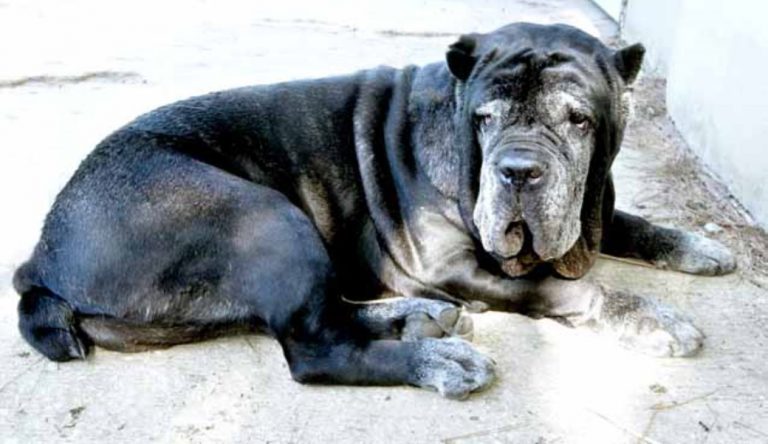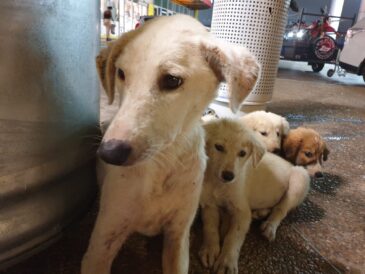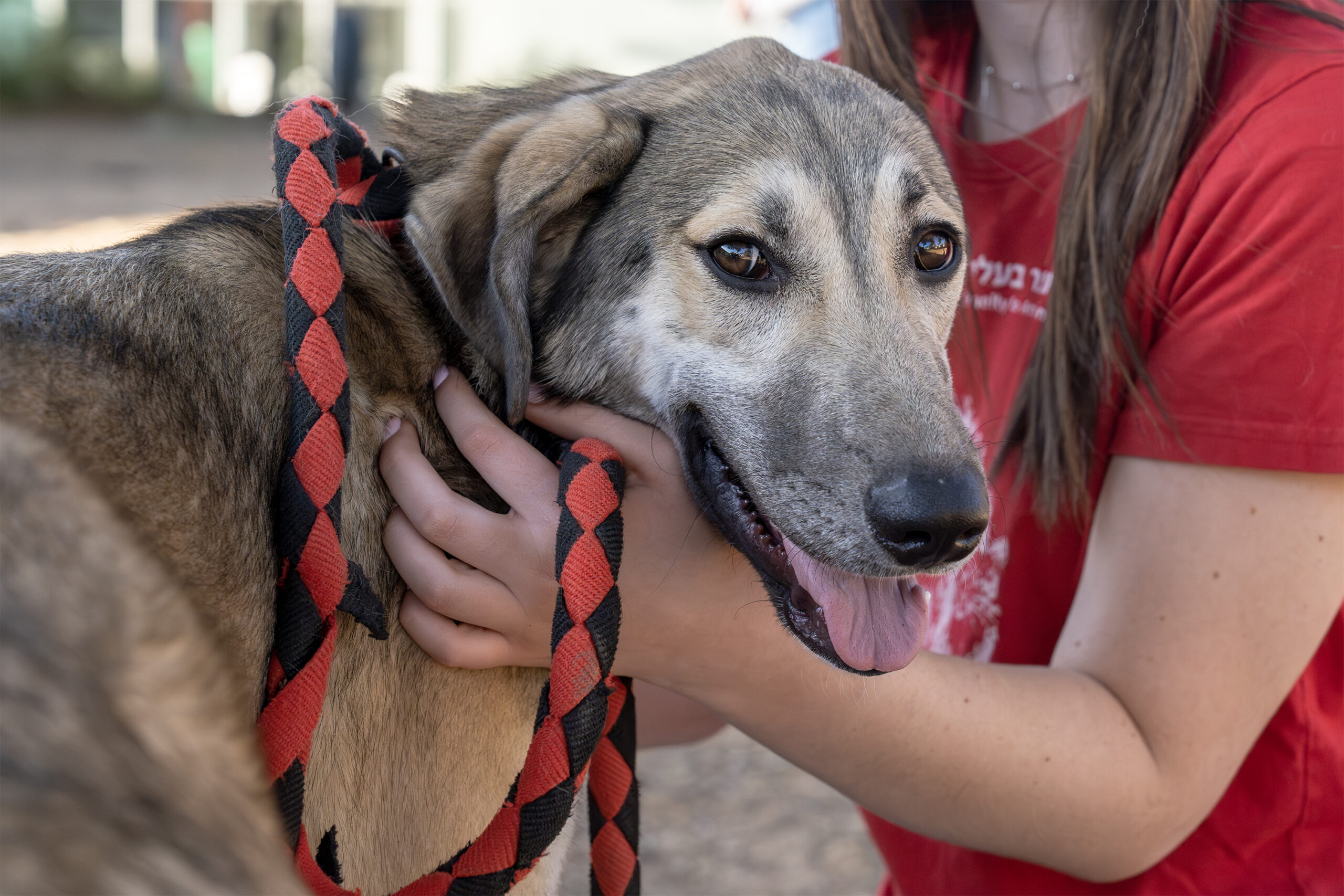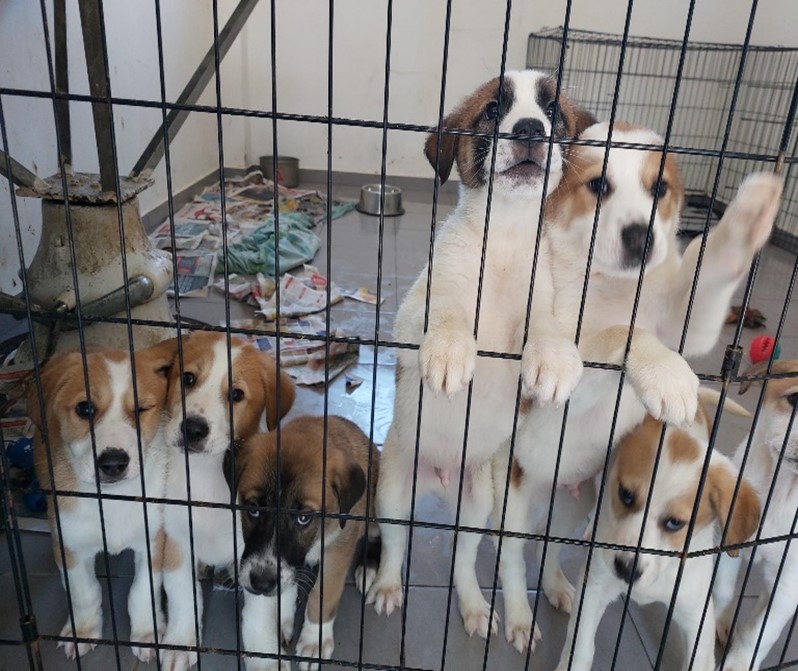Dr.Vered Ables, veterinarian of the Mapet Company Ltd.
Everyone knows people who are constantly dieting. Every now and then, the media advertises new diets that guarantee to finally resolve obesity that are always accompanied by Before and After pictures. Another familiar phenomenon is known as rebound – people who managed to lose weight only to gain it right back along with several additional pounds. This phenomenon is generally attributed to extreme dieting during which the body fails to adapt to the daily caloric intake it receives and maintain its new weight. Once the restrictions are lifted, the body returns to its former weight.
People, however, are not the only ones suffering from overweight. Our best friends, dogs, also suffer from being overweight, a phenomenon that has been worsening in recent years.
What is obesity?
Dogs are defined as obese if its weight exceeds 20-25% of its ideal weight. In obese dogs, fat is evident around the waist, pelvic area or around the rib cage.
It is important to understand that obesity is not just an esthetic problem but one that might damage the dog’s health and even endanger its life. An understanding of the causes of obesity and the failure of diets in dogs is the key to successful dieting.
What causes obesity?
1. Poor diet. Overeating (irregularly scheduled meals, excessive amounts of food), homemade food (leftovers) and excessive snacking as well as excessive intake of calorie-, fat- and sugar-laden food.
2. Inactivity or insufficient amount of exercise.
3. Aging. Because older dogs tend to be less active, they require fewer calories.
4. Neutered or spayed dogs are less active and when resting, require less energy. In addition, the absence of a sex hormone causes the metabolism to slow down.
5. Genetic predisposition towards obesity. Certain breeds, such as the Labrador, are prone to being overweight in comparison with, for example, hunting dogs.
6. Hormone disorders. Hypothyroidism (underactive thyroid gland)
Why is it difficult for dogs to lose weight?
1. Many owners do not supply food for meals, relying on the dog to decide when and how much it will eat. Eating the same amount, divided into meals ‘wastes’ calories consumed by the digestive system during a meal.
2. ‘Compensation’ by giving the dog excessive amounts of leftovers or snacks.
3. ‘Spoiling’. Dogs prefer fat- and energy-rich foods over more balanced foods. Advanced food technologies facilitate the production of quality, flavorful food.
4. A weight loss program requires commitment and investment by the owners (adhering to feeding times and amounts of food). This is a genuine difficulty and is a major cause of diet failure among human beings as well.
5. A weight loss program requires patience. Proper weight loss that is not accompanied by rebound weight gain is gradual and can take several months.
6. Overweight dogs are less active and are more prone to weight gain (vicious cycle). Some dogs behave as if they are constantly hungry although their physical needs have been satisfied.
7. Owner difficulty in changing the amount and type of food in the transition from puppy to adult dog.
8. Difficulty in regulating the amounts of food. In homes in which more than one person feeds the dog and feeding is done by filling a bowl, owners have a difficult time in monitoring the exact amount their dog eats.
Why is obesity dangerous?
1. Creates stress on the joints and back, as manifested in difficulties in getting up, walking and climbing stairs, in addition to possible ligament tears.
2. Creates stress on the heart and lungs, as manifested in breathing difficulties and rapid fatigue.
3. Digestive problems and increased cholesterol and fats in the blood. Fat-rich meals might damage, for example, pancreatic function.
4. Increased incidence in disease such as diabetes.
5. Certain types of cancer are more common among overweight dogs.
6. Esthetics. In an era in which thinness worshipped by society, and plastic surgery in dogs is becoming routine, obesity has become an esthetic flaw.
How is a weight loss program carried out?
Weight loss requires a desire, commitment and patience of every member of the household. Successful weight loss that is not accompanied by rebounding to the original weight, takes several months. Adherence to the program rules will facilitate success, lead to gradual weight loss and improve the dog’s health as well as quality of life. The good news is that our control of the dogs and what goes into their moths neutralizes one of the most difficult obstacles in human weight loss. Veterinarians should be consulted should difficulties arise in carrying out the program.
1. Blood tests should be carried out before starting the program in order to rule out any medical causes of obesity, such as hypothyroidism (underactive thyroid activity) or hyperactive adrenal gland.
2. The dog should be weighed before starting the program and on a monthly basis, even after reaching the target weight. A home scale can be used to weigh oneself with the dog and then without the dog. The difference obtained is the dog’s weight.
3. Preventing obesity is easier than losing the weight. If a dog shows a tendency to obesity, his diet should be changed to include quality commercial food designed to maintain the dog’s weight or to facilitate weight loss, such as Techni-Cal’s Weight Control or Reduced Fat – a reduced fat food for dogs manufactured by Bil Jac. These foods are low in calories and fat but rich in fiber to improve metabolic activity. It is also enriched with ingredients that facilitate weight reduction. The packages include a table that lists the recommended daily allowance.
4. When transitioning between foods, the new food should be combined with the previous food over the course of a week.
5. When the dog is obese, a veterinarian should be involved to calculate the ideal target weight. Calculation of the recommended daily allowance will be based on this weight.
The daily recommended allowance for the target weight should be checked on the table that appears on the diet food package (in the column designated for weight loss), and this should be divided into several meals per day. In cases of extreme obesity, the veterinarian will recommend medical weight loss food.
6. The greater the number of meals, the more effective the weight loss will be. This method makes monitoring and weight loss easier, is more suitable to the nature of the dog and alleviates the ‘psychological hunger’ between meals.
7. Sufficient amounts of fresh water should be provided.
8. Avoid giving snacks that might hinder weight loss. If you want to make your pet happy, give low-calorie and low-fat snacks (e.g. Veterinary Select snacks. Or give your dog a carrot, rice cakes or a limited amount of peas).
9. It is highly recommended that the dog’s activity level be increased. 20 minutes of walking a day, swimming, running on soft surfaces and games will increase enjoyment, reinforce the bond with the dog and facilitate weight loss.
10. Once the ideal target weight has been reached, low-calorie foods in measured amounts should be continued for the rest of the dog’s life.









